Understanding Herbal Tinctures
How to Make Herbal Tinctures
Herbal Tinctures
A sip of herbal tea or a dropperful of tincture can be the catalyst for a lifelong pursuit of herbalism. Many of us begin our studies making these simple and effective preparations, yet basic concepts sometimes become complicated when trying to decipher Latin binomial nomenclature, formulations, physiological actions, and historical research. The most common mix-ups arise from misused terminology, and one term that tends to be applied to a variety of preparations is tincture.
What Are Herbal Tinctures?
Tinctures are concentrated herbal extracts that have alcohol as the solvent. An acetum is sometimes defined as "a vinegar tincture" in the tomes, but this is a pretty rare exception.
WHAT DEFINES A TINCTURE?
- Tinctures are concentrated herbal extracts.
- All tinctures are extracts, but not all extracts are tinctures! Alcohol must be the solvent used to extract the herbal properties. If you are using vinegar, glycerine, only water (water used to dilute alcohol is fine), or any menstruum (solvent) other than alcohol, your preparation is an extract, but it is not a tincture. Any spirit may be used, but many herbalists prefer something neutral like vodka so the taste of the herb comes through.
- They can be made with fresh or dried flowers, leaves, roots, barks, or berries. Examples include: dried stevia leaf, vanilla beans, and dried mushrooms.
HOW AND WHY DO YOU USE TINCTURES?
- Tinctures are dietary supplements in a concentrated, shelf-stable, and liquid form. Like other herbal extracts, tinctures can be used to support a wide range of wellness goals.
- Their effects will depend upon the herb or herbs tinctured, the amount and frequency taken, and the individual ingesting them, so it's recommended that folks consult a qualified medical professional for advice on appropriate use for your personal needs.
- Tinctures can be taken straight by the dropper or diluted in tea or sparkling water. Some tinctures may also be used to add flavor to cocktail recipes.
2 Ways to Tincture Herbs
THE PERCOLATION METHOD: COMPLEX BUT QUICK
If you enjoy hobbies that require care, precision, and specialized tools (or if you need a finished tincture in a couple days or less), the percolation method might be right for you! While it definitely requires more equipment, math, and work than the popular folk (maceration) method, percolation allows you to create tinctures in a fraction of the time (24 to 48 hours, on average).
Much of the guidance in this post regarding herb proportions and alcohol percentages applies to both methods, but the percolation process requires a series of specific measurements and steps for effective results. Follow along as esteemed herbal educator, Thomas Easley of the Eclectic School of Herbal Medicine, demonstrates how to create herbal extracts using the percolation method step-by-step:
THE FOLK METHOD: SIMPLE, BUT SLOW
Unless you have some sort of handy collapsible scale contraption that fits in your processing kit, using the folk method is the best way to go when making remedies in the forest! It's also dandy at home. Simple, practical, and efficient, this method allows you to estimate your herb measurements without any special tools.
The only supplies you'll need include organic herbs, glass jars (either with a plastic lid or parchment paper/a sandwich bag to protect the metal lid from corrosion), a knife or chopper, metal funnel, cheesecloth, alcohol (sometimes called a "menstruum" in tincture preparations), and amber glass dropper bottles.
While some of following information will be relevant to the faster method for tincturing herbs known as percolation, since the folk method is more widely used by home herbalists, the next sections are written with the this traditional technique in mind.
Let's get started! Here are a few important tincturing tips we've learned over the years...
Plant Material Proportions (Fresh vs. Dried)
Your first step is to fill your tincturing container with the correct amount of herbs. Proportions are important here: too little, and you'll end up with a weak tincture. Too much, and the amount of alcohol added won't be enough to pull out all the plant goodness from your herbs.
The appropriate alcohol strength and the relative amount of plant material to use will vary based on what you're tincturing. Here are some basic measurement guidelines:
FRESH LEAVES & FLOWERS
• Finely chop or grind clean herb to release juice and expose surface area.
• Only fill jar 2/3 to 3/4 with herb.
• Pour alcohol to the very top of the jar. Cover plants completely!
• Jar should appear full of herb, but herb should move freely when shaken.
DRIED LEAVES & FLOWERS
• Use finely cut herbal material.
• Only fill jar 1/2 to 3/4 with herb.
• Pour alcohol to the very top of the jar. Cover plants completely!
FRESH ROOTS, BARKS, & BERRIES
• Finely chop or grind clean plants to release juice and expose surface area.
• Only fill jar 1/3 to 1/2 with fresh roots, barks, or berries.
• Pour alcohol to the very top of the jar. Cover plants completely!
• Jar should appear full of herb, but herb should move freely when shaken.
DRIED ROOTS, BARKS, BERRIES
• Use finely cut herbal material.
• Only fill jar 1/4 to 1/3 with dried roots, barks, or berries.
• Pour alcohol to the very top of the jar. Cover plants completely!
• Roots and berries will double in size when reconstituted!
Alcohol Type and Strength
Once you've filled your container with the correct amount of plant material, you'll need to fill the rest of the space with a high-proof alcohol. Most spirits will work, but many herbalists favor a high-quality, clear, and low-flavor liquor like vodka or grain alcohol. Note that stronger alcohol types can be diluted with distilled water to reach a lower alcohol content by volume.
The appropriate alcohol strength for your tincture will depend upon the qualities of the plant material being used. Stronger is not always better!
TIPS FOR MATCHING YOUR ALCOHOL STRENGTH TO THE HERB BEING TINCTURED:
40% to 50% alcohol by volume (80- to 90-proof vodka)
• "Standard" percentage range for tinctures.
• Good for most dried herbs and fresh herbs that are not super juicy.
• Good for extraction of water-soluble properties.
67.5% to 70% alcohol by volume (half 80-proof vodka and half 190-proof grain alcohol)
• Extracts the most volatile aromatic properties.
• Good for fresh, high-moisture herbs like lemon balm, berries, and aromatic roots.
• The higher alcohol percentage will draw out more of the plant juices.
85% to 95% alcohol by volume (190-proof grain alcohol)
• Good for dissolving gums and resins but not necessary for most plant material.
• Extracts the aromatics and essential oils bound in a plant that don't dissipate easily.
• This alcohol strength can produce a tincture that's not easy to take and will also dehydrate the herbs if used for botanicals beyond gums and resins.
WHERE TO SOURCE PURE, ORGANIC GRAIN ALCOHOL FOR EXTRACTS
Folks often ask us for advice on finding high quality alcohol for their herbal extracts. We recommend supporting your local spirits provider when possible (and don't be afraid to chat with them about what you're looking for—they'll often place special orders for you free of charge!). However, if shopping local isn't an option for you for this particular item, there are a number of online retailers that can help.
Here are some of our staff's go-to sources for our home apothecary creations:
- Culinary Solvent
- Glacial Grain Spirits
- Ultra-Pure
- Alchemical Solutions
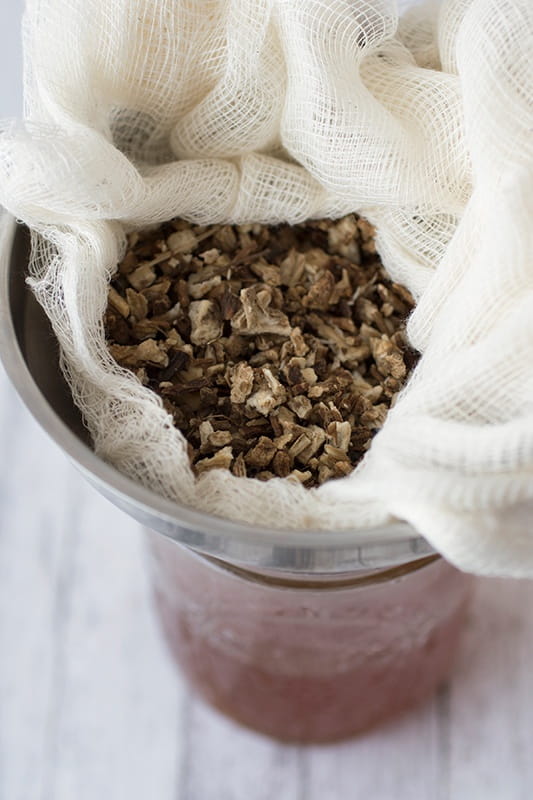
Tincture Extraction Time
Tinctures should be secured with a lid during extraction. Since some tinctures can effectively melt plastic (particularly those with aromatic herbs), we recommend using a standard metal canning jar lid with rim. If you plan to let your tincture macerate for six months or more, you may consider protecting your lid from corrosion by placing a layer of parchment paper underneath the lid before securing the rim (a paper sandwich bag works well too). If you opt for this option, try to leave as little air space between the liquid and lid as possible, as too much air plus the parchment may cause tinctures of insufficient alcohol content to develop rot.
Store your tincture in a cool, dark, dry place. Shake several times a week, and check your alcohol levels. If the alcohol has evaporated a bit and the herb is not totally submerged, be sure to top off the jar with more alcohol. Herbs exposed to air can introduce mold and bacteria into your tincture. Allow the mixture to extract for 6 to 8 weeks.
How to Bottle Your Tinctures
Now it's time to squeeze!
Drape a damp cheesecloth over a funnel and place into a cobalt or amber glass bottle. Pour tincture into funnel and allow to drip. Then squeeze and twist until you can twist no more!
Or, another option is to blend herbs into a mush and strain the remaining liquid. Keep extracts in a cool, dark place and your tinctures may last for many years.
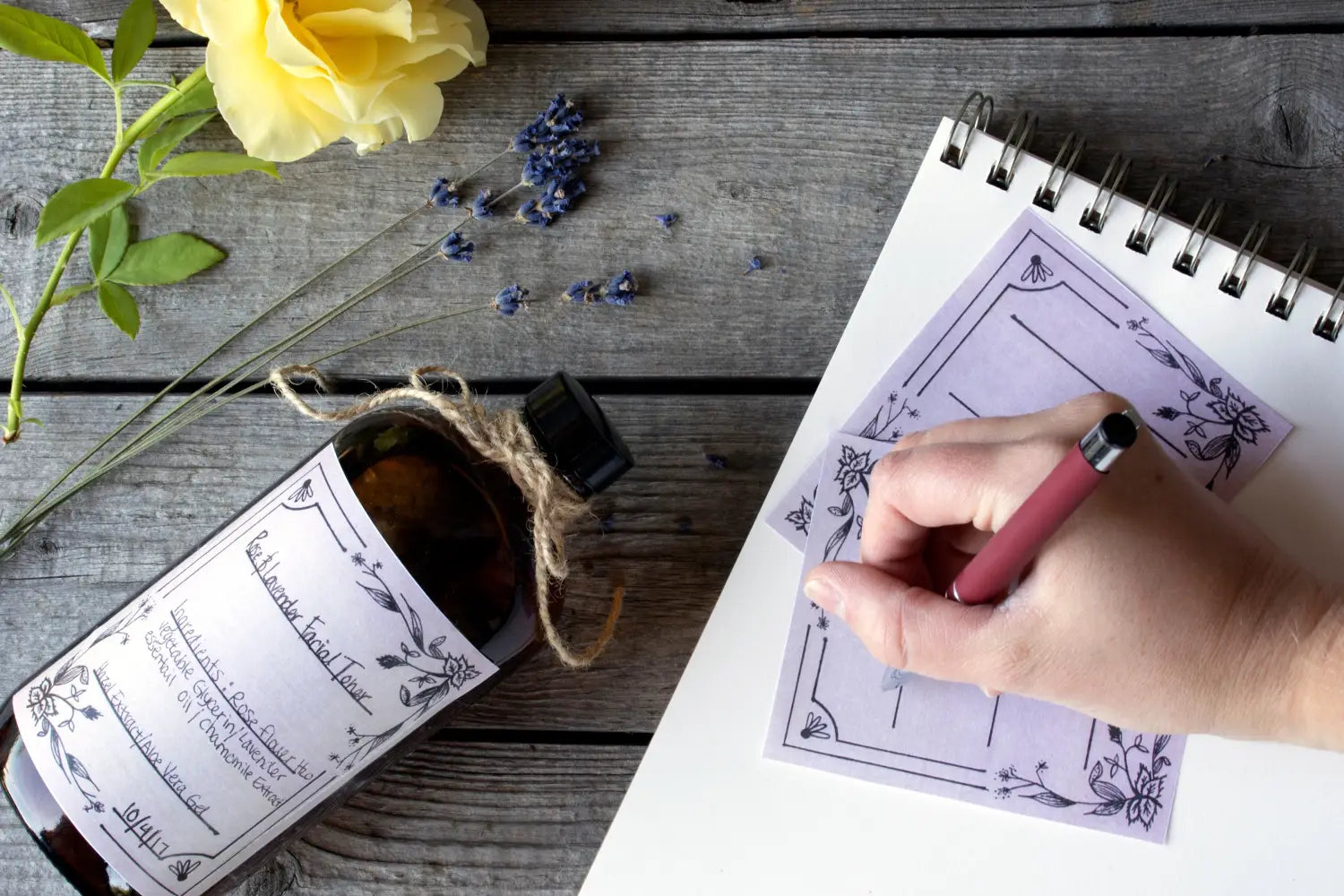
How to Label Your Tinctures
This last step is perhaps the most important of all: labeling your creation!
Once you've strained and bottled your tincture, be sure to label each bottle with as much detail as possible. You'll be so happy to have this information to play with next time you tincture the same herb. Don't lean on your sense of taste or smell alone — regardless of how well-honed your organoleptic skills may be, tinctures can trick even the most experienced herbalist. Skipping this step will surely lead to a dusty collection of unused mystery extracts.
This step is so critical, we've created a post all about labeling. It even includes a free apothecary label template you can print out at home!
Books on Making Tinctures
Want to dive headfirst into the wide world of tincture-making? Here are a few of our favorite books to have in any herbal library:
- The Herbal Medicine-Maker's Handbook by James Green
- Herbal Medicine from the Heart of the Earth by Sharol Tilgner ND
- Medicinal Herbs: A Beginner's Guide by Rosemary Gladstar
- The Modern Herbal Dispensatory by Thomas Easley & Steven Horne


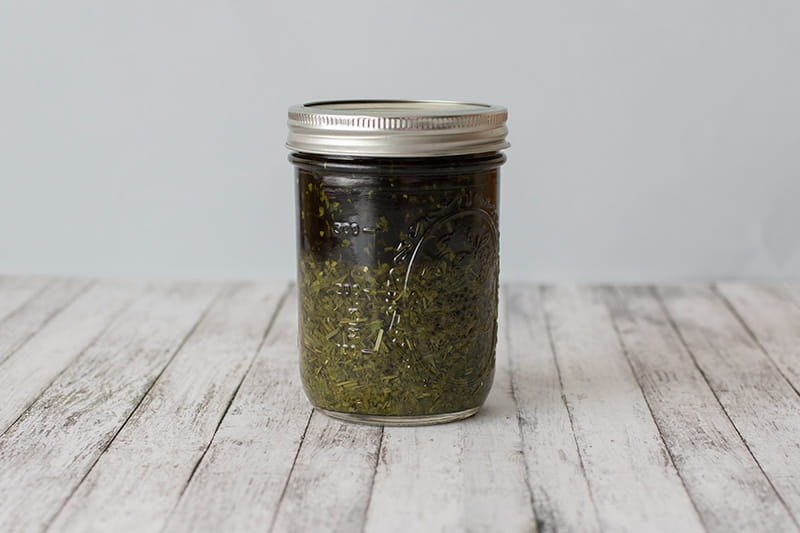
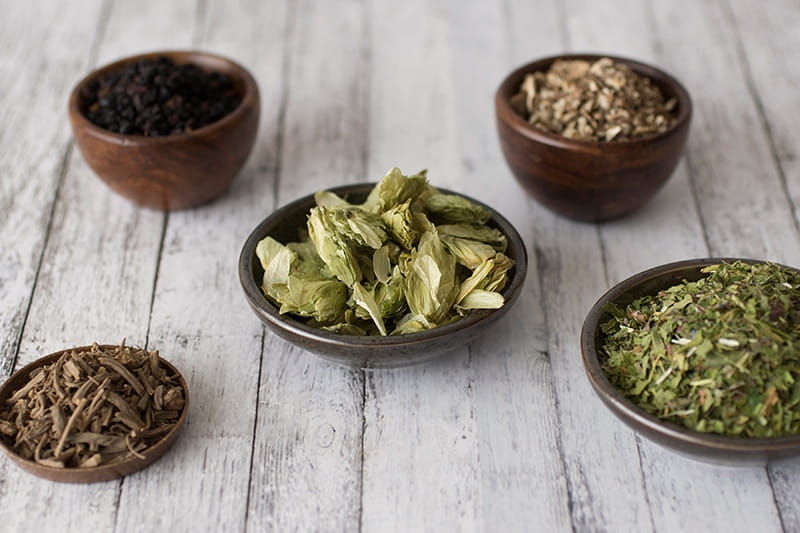
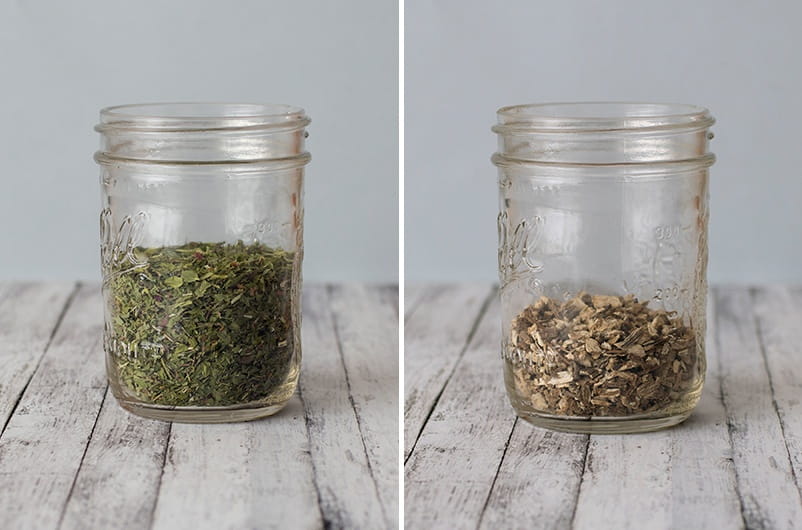
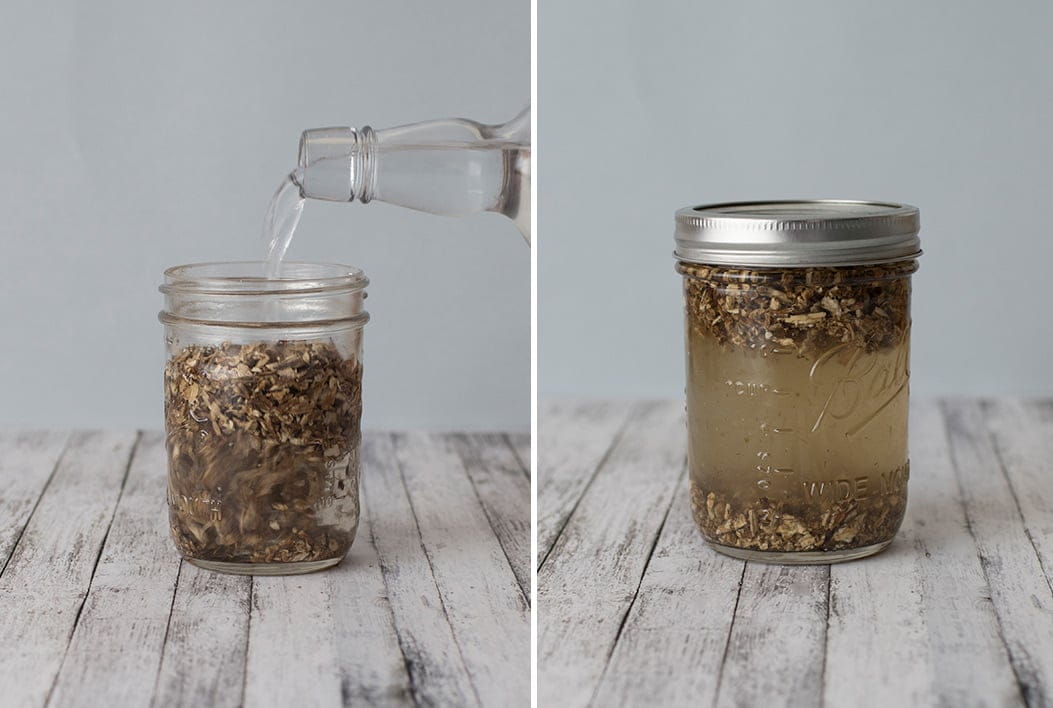



Leave a comment